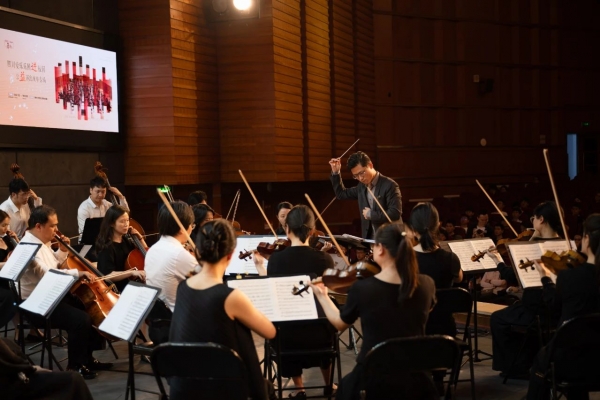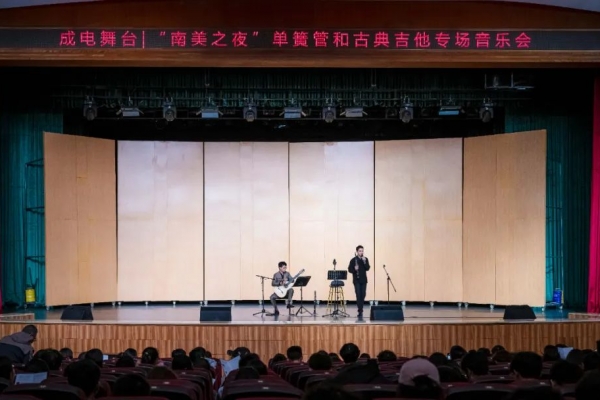即可将网页分享至朋友圈
为搭建我校博士后之间的学术交流平台,促进学术水平提升,学校博士后管理办公室组织开展博士后学术沙龙活动。本次沙龙由我校博士后Amr Salah Ali Elsayed Zalhaf、高杰维、王鹏、AFZAL MUHAMMAD、邓惠文分享其研究成果,诚挚邀请感兴趣的师生参加。
一、时 间:2021年6月16日(周三)13:30
二、地 点:清水河校区经管楼宾诺咖啡
三、主办单位:电子科技大学博士后管理办公室
四、承办单位:机械与电气工程学院 电子科技大学博士后联谊会
五、活动安排:
报告一:
(1)主题:Impact of lightning strikes on renewable energy sources operation and HVDC transmission systems.
(2)主讲人:Amr S. Zalhaf 机械与电气工程学院博士后
(3)交流内容:
In this talk, we briefly discuss the transient behavior of renewable energy sources (Wind turbines and PV systems) exposed to lightning strikes as well as the impact on HVDC transmission systems. There are three issues: (1) The transient behavior of WT exposed to a lightning strike is assessed numerically and experimentally, (2) Evaluation of the Transient Overvoltages of HVDC Transmission Lines Caused by Lightning Strikes.
First, a numerical method is presented to determine the transient behaviour of a WT exposed to lightning strike. The WT blade is divided into a number of linear vertical segments and each segment is represented by π-equivalent RLC circuit. First, the tower is divided into vertical cylinders and each cylinder is represented by π-equivalent RLC circuit to simplify calculations. Then, the grounding system is first simulated by an equivalent resistance. Then, the high-frequency nature is taken into account while representing the grounding system by a ring electrode provided with horizontal electrodes and vertical rods. The shape of the ring electrode is approximated by representing it as a polygon composed of a series of horizontal conductors; the same as reported. Each horizontal conductor, each horizontal electrode and each vertical rod of grounding system is represented by π-equivalent RLC circuit. The nodal equations of the grid representing the whole system are written at each discrete time instant to calculate the transient overvoltages. For validation of the numerical results, experimental measurements are carried out by injecting an impulse current at the blade tip of a typical small-scale WT using an impulse generator at a high-voltage laboratory.
Then, the transient behavior of a WT when two blades are struck simultaneously by lightning is studied which was not covered by previous studies. Assessing the transient behavior of WTs during this phenomenon is important for proper lightning protection system design. To check the correctness of the numerical results, an experimental setup is conducted using a reduced-scale WT in a high-voltage laboratory. An impulse generator is used to simulate the strike and apply an impulse voltage simultaneously on two WT blades. The measured induced overvoltage values on the reduced-scale WT are compared with the calculated ones and are illustrated taking into account the wave propagation theory.
Finally, the impact of lightning strikes on DC-TL overvoltages is assessed. The DC-TL of CIGRE benchmark HVDC system is modified by using a distributed-parameter model instead of the lumped-parameter model, using ATPDraw software. The modified model takes into account typical values of the 100 km, 500 kV DC-TL considering shielding-wire and DC towers to study the lightning impact. Lightning strike is applied to shielding-wire with different current peaks to check insulators back-flashover. Moreover, the influence of tower grounding resistance variation on the transient overvoltages across tower body and back-flashover is assessed. From simulation results, increasing the grounding resistance value results in higher overvoltages across tower body, which increases the probability of back-flashover. Also, shielding-failure is studied, and the effect of changing the strike position over TL length is investigated. Besides, the variation impact of lightning current peak and grounding resistance on shielding-failure flashover is investigated. The results show that the impact of lightning current peak has a more significant impact than the grounding resistance on shielding-failure flashover.
主讲人简介:
Amr S. Zalhaf, received the BSc degree in Electrical Power and Machines Engineering from Tanta University in 2010. In 2011, He worked as a teaching assistant in the Department of Electrical power and Machines Engineering, Faculty of Engineering, Tanta University. Then, he received the MSc degree from the same department in 2014 and became an assistant lecturer. Then, he received the PhD degree in Energy resources engineering from Egypt-Japan University of Science and Technology (E-JUST), Alexandria, Egypt, in 2019. Currently, he is a postdoctoral researcher at the School of Mechanical and Electrical Engineering, University of Electronic Science and Technology of China (UESTC), Chengdu, China. He was a Visiting Scholar with the Department of Electrical and Electronic Engineering, School of Engineering, Tokyo Institute of Technology, Tokyo, Japan (Internship for PhD studies) in 2018. His research interests include high-voltage engineering, renewable energy sources, wind energy systems, Lightning strikes transient analysis, ac/dc microgrids, power quality, power system stability, HVDC transmission, grid-connected converters for renewable energy systems, and load side management.
报告二:
(1)主题:高速列车S38C车轴外物致损模拟与疲劳性能研究
(2)主讲人:高杰维 机械与电气工程学院博士后
(3)交流内容:
外物致损是造成高速列车车轴疲劳失效的典型因素之一。本研究采用立体显微镜分析了CRH2系列高速列车S38C车轴表面的损伤,借助轻型空气炮向取于S38C车轴表面的四点弯曲疲劳试样发射多种角度、速度球形和正方形钨钢弹体,模拟外物致损。采用逐步加载法来确定损伤试样的疲劳强度,在场发射扫描电镜下观测损伤特征和疲劳断口形貌。结果表明,车轴表面的损伤大部分是刮擦,少部分是缺口。球形弹体垂直冲击损伤随着速度的增大变得逐渐恶劣,材料缺失和微裂纹分布在损伤边缘,底部出现绝热剪切带引发的裂纹;球形弹体斜冲击损伤出射区主要以形变和剪切作用下的掉块为主;方形弹体冲击损伤形态各异。不考虑损伤形成的工况,尽管数据存在离散,试样疲劳强度随着损伤深度的增加而降低。本研究为高速列车车轴检修提供了理论依据。
(4)主讲人简介:
高杰维,毕业于西南交通大学材料学院,2017-2020年在牵引动力国家重点实验室工作,现为电子科技大学机械与电气工程学院博士后,师从朱顺鹏教授,研究方向为高速列车结构完整性与寿命预测。近年来参与多项高速列车关键零部件国产化项目,包括牵引杆、轴箱和接地装置。主持国家重点研发计划子任务、四川省重点研发计划项目、牵引动力国家重点实验室自主课题各1项,参与中车和铁路总公司多个轮轴疲劳项目。
报告三:
(1)主题:Robustness Improvement on PMU Based Dynamic Equivalent Modeling of Distributed Small Hydropower Generator Stacks
(2)主讲人:王鹏 机械与电气工程学院博士后
(3)交流内容:
Due to the geographic features and fruitful water resources, the distributed generation of Small Hydropower Generator Stack (SHGS) are vigorously developed in southwest China. As the more concerns about security and stability of power grids with the large amount of SHGS feed into the grid, the accurate models are critical to analyse those potential impacts. With the development of online monitoring technologies in smart grid, PMU based dynamic equivalent modeling for SHGS drawn many attentions. However, field applications reveal that traditional SHGS equivalent model may not be robustness enough to adapt the different disturbances. To overcome this deficiency, method to improve the robustness of SHGS dynamic equivalent modelling is proposed. In the paper, a coherency identification based multi-machine modeling method is introduced to enhance the accuracy of equivalent model. Sensitivity and correlation analysis based key parameters selection scheme is implemented to select the critical parameters, meanwhile avoiding the multiple solutions problem. Moreover, multi-objective optimization algorithm is designed for key parameters identification of the equivalent model. Additionally, hybrid dynamic simulation has adopted into the equivalent process to improve the computational efficiency. The effectiveness of the proposed method has been validated with an actual case from China Southwest grids.
(4)主讲人简介:
Peng Wang received the B.S. and M.S. degrees in electrical engineering from Fuzhou University, Fuzhou, China, in 2010 and 2013, respectively, and the Ph.D. degree in control science and engineering from the University of Electronic Science and Technology of China, Chengdu, China, in 2019. He is currently the Postdoctoral with the School of Mechanical and Electrical Engineering, University of Electronic Science and Technology of China, Chengdu, China. His research interests include power system monitoring and control and aggregated modeling for power system.
报告四:
(1)主题:Distributed electricity market and blockchain role in smart energy system
(2)主讲人:Afzal Muhammad, 机械与电气工程学院博士后
(3)交流内容:
Electricity plays important role in the daily life of people. Power and energy sector is important for driving the economic growth especial in energy market. Ensure access to affordable, reliable, secure, sustainable and modern energy for all is achieving the sustainable development goal. In energy and power sector, electricity bill paying/ financial transactions are very important. The problems can be solved by increasing the proliferation of decentralized energy generation (from renewable energy sources) in the existing energy mix. Decentralized energy generation are in the form of renewable energy sources (RES). Increased proportion of the distributed energy will mitigate the environmental problem, reduces the transmission losses due to less physical distance between energy generation and consumption site. Its change the consumers oriented market to prosumers oriented market. However, it will make the energy system more complex due to their inherent intermittency issues. Prevalent wholesale markets are not capable to respond in accordance with the intermittent power generation from decentralized energy generation in local energy market. Furthermore, such markets do not incorporate local availability or scarcity of energy while deciding the prices. Microgrids provide an opportunity for small scale distributed RES to trade energy locally (peer to peer or through utility grid). The realization of microgrid markets necessitates safe and smart information system for their appropriate operation.
Blockchain is an emerging information technology platform that makes provision to new avenues for the energy system. It also provides various applications which are user friendly and transparent enabling the prosumers to participate in decision making related to energy trading. Blockchain enabled energy market, energy generation is transforming from centralized and fossil fuel dependent to distributed, small scale and renewable energy dependent. The control of the system is locally exercised which reduces the complexity for utility to conduct the central control. A single point of failure does not endanger the whole system in distributed control. It has the potential to decentralize the way in which data is stored and managed in the shared ledger which eliminates the role of intermediary in the society. It provides a new way of energy exchange between market participants without a central authority. The blockchain technology is used as distributed solution for secure transactions (“Any information (price, available energy, energy demand and etc.) exchange between participants/nodes are called transactions in blockchain technology”.) settlement and recording. It has been used to permit users to trade energy and to keep track of such trade without risking the tampering of such transactions. Blockchain is restructuring the energy market and transforming it from monopolistic scenario to the more competitive and distributed one.
In this talk, we briefly discuss the smart energy system (concepts, architectures, visions and key technologies), blockchain technology (key concepts and architectures), blockchain for energy system, blockchain for energy management and distributed energy trading with case studies and priceing machisms.
(4)主讲人简介:
Muhammad Afzal received the Bachelor of Science in Computer Engineering in 2010, Master of Science in Electrical Engineering in 2016 from COMSATS Institute of Information technology, Wah Campus, Pakistan. He completed his Ph.D. in Electronic Science and Technology from University of Electronic Science and Technology of China (UESTC) in 2020. He is currently a post-doctoral researcher in Sichuan Provincial Key Lab of Power System Measurement and Control, School of Mechanical and Electrical Engineering, UESTC, Chengdu, China in the kind supervisor of Prof. Li Jain and Prof. Huang Qi in the research field of energy management, energy trading and tractions management in distributed electricity market.
His current research interests include energy management, distributed electricity trading, blockchain technology in power system monitoring and control, power system high performance computing and Power Market.
报告五:
(1)主题:PEMFC系统剩余使用寿命预测方法研究
(2)主讲人:邓惠文 机械与电气工程学院博士后
(3)交流内容:
随着人类社会对节能减排需求的不断提升,在当前全球能源供给发生深刻变革的大背景下,氢能与燃料电池技术的发展利用对能源转型及构建绿色低碳的能源环境具有重要的战略意义。在轨道交通领域,高能量密度、零排放、高环境适应性的质子交换膜燃料电池(Proton Exchange Membrane Fuel Cells, PEMFCs)作为燃料电池有轨电车的主动力源,其不仅为电车运行持续提供电能,还承担着保障电车安全、稳定运行的重要使命。然而,目前PEMFCs在大规模商业化应用道路上仍面临两大瓶颈问题:寿命短和成本高。除了开发高性能、低成本的新材料和设计新的PEMFCs结构以外,有效的健康管理方法可在电车运行过程中优化其耐久性,延长PEMFCs寿命并降低成本。针对PEMFC电堆系统稳态与动态寿命预测问题,提出利用基于数据驱动的寿命预测方法实现准确的系统剩余寿命预测。
(4)主讲人简介:
邓惠文,机电学院博士后,合作导师是电子科技大学机电学院胡维昊教授,本科毕业于西南交通大学电气工程学院电子信息工程专业,博士毕业于西南交通大学电气工程学院电气工程专业,主要研究方向为燃料电池系统故障诊断及寿命预测。
电子科技大学博士后管理办公室
2021年6月12日
编辑:林坤 / 审核:林坤 / 发布:陈伟


